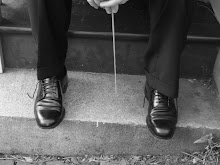 Velasquez, Las Meninas.
Velasquez, Las Meninas. 1656-7
This painting has always fascinated me... for apparent reasons. In the age of portraiture, one can find similar styles, layout, and structure. The often centralization of the model and standard pose can become monotonous.
This time, Velasquez, destroys what we know of portraiture. At first, we are the models. The court watching as the master applies brush to canvas. The thousands that have stood before the company have essentially been painted by him.
Yet, it is not what we think. The mirror in the background gives it away. Velasquez is painting a portrait of Philip IV and his wife, Mariana.
Michael Foucault, in a stunning display of observation, gives a detailed analysis in his book The Order of Things. It touches every brush stroke, as well as the empty space between canvas and viewer. Its depth is intriguing.
Excerpt from Chapter 1:
But the relation of language to painting is an infinite relation. It is not that words are imperfect, or that, when confronted by the visible, they prove insuperably inadequate. Neither can be reduced to the other's terms; it is in vain that we say what we see; what we see never resides in what we say.
The startling truth found here can make even the most devoted art historian/writer shutter. It does not mean, that the words are meaningless. It simply means that words are not all that we see. It would be an infinite novel if we captured everything. The room around the canvas--the frame--the light outside--the dust between us and the paint--inside the canvas--behind the canvas--our very own eyelids--the faint ghost of our noses, that which we take for granted, because it is always with us; there before us. This is only the surface... it gets much deeper, deeper still to infinity. If we begin to think about what we "imply" from seeing, the list is two-fold.
There seems no end to what words could possibly do. And yet, one can assume that even this would not be enough. The words are not seeing; no matter the apparent accuracy. Still the exercise of writing about what we see is priceless. It affords us a grid of layers, once organized, we can move on to the next, returning as needed to reevaluate. We can disassemble, move around, mix up, reorganize, and then reassemble these pieces until a sufficient understanding has been reached. Then, and only then, can we begin the process of discovery and understanding. We can finally begin the journey of enjoying the moment caught on canvas, its meaning, its purpose, and where it fits within our own canvas.















 The last decades of the 15th century saw the emergence of international humanism. People of status were suddenly interested in foreign art, which included religious works. Matthias Corvinus, king of Hungary, collected Italian Renaissance works and even had his palaces redesigned in the rustic Italian Renaissance style. Culture spread widely just as the Christian faith spread with the development of monasteries and the illuminated manuscript. Among these works, was religious sculpture, second only to painting that depicted religious scenes, figures, and rituals. The powerful genius of men like Michelangelo, Bernini, Bellini, and Mazzoni helped foster the new aesthetic of religious art. These aesthetic concepts took hold in the art world and remained a powerful force in our culture.
The last decades of the 15th century saw the emergence of international humanism. People of status were suddenly interested in foreign art, which included religious works. Matthias Corvinus, king of Hungary, collected Italian Renaissance works and even had his palaces redesigned in the rustic Italian Renaissance style. Culture spread widely just as the Christian faith spread with the development of monasteries and the illuminated manuscript. Among these works, was religious sculpture, second only to painting that depicted religious scenes, figures, and rituals. The powerful genius of men like Michelangelo, Bernini, Bellini, and Mazzoni helped foster the new aesthetic of religious art. These aesthetic concepts took hold in the art world and remained a powerful force in our culture.

